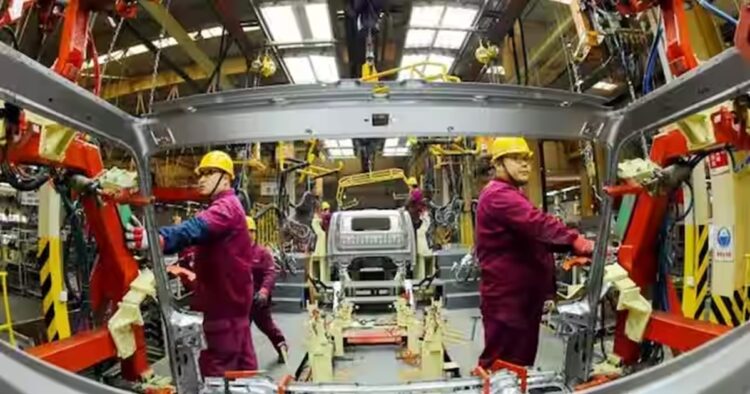‘China’s manufacturing sector recorded a decline for the fifth consecutive month’, reveals an official factory survey on Friday.
The manufacturing purchasing managers’ index (PMI), compiled by the National Bureau of Statistics (NBS), dropped to 49.1 in February from 49.2 in January.
The figure falls below the critical 50-mark, which indicates contraction and ranging with a Reuters poll’s median forecast.
The official PMI decline may be influenced by seasonal factors, primarily the Lunar New Year, which occurred on February 10, 2024.
The festivities led to factory closures as workers returned home for the holiday. Despite the official PMI contraction, a survey by Caixin/S&P Global, released shortly after, depicted a steady expansion in manufacturing activity.
Both production and new orders grew at a speedy pace, highlighting an uneven economic recovery.
Chief Economist Dan Wang at Hang Seng Bank China attributed the dip in the official PMI to a sharp contraction in new foreign orders, indicating a potentially prolonged weakened demand from overseas markets.
The shrinkage of new export orders for 11 consecutive months and a year-long contraction in factory employment signal ongoing challenges for Chinese businesses.
China’s post-COVID recovery, marked by sub-par growth over the past year, raises doubts about the sustainability of its economic model.
This has fuelled expectations that policymakers will need to consider more reforms to support long-term growth.
The economic hurdles include a property crisis, consumer spending hesitancy, foreign firms divesting, manufacturers struggling to find buyers, and local governments grappling with substantial debt burdens.
Despite the manufacturing setback, the official non-manufacturing PMI, encompassing services and construction, rose to 51.4 from 50.7 in January.
This marks the highest reading since September last year, attributed to robust activity during the Lunar New Year holidays.

















Comments